How to Paint Loose with Acrylics
Are you ready to dive into the vibrant world of acrylic painting and unleash your inner artist? Painting loose with acrylics is not just a technique; it's a way to express emotions, capture moments, and let your creativity flow freely. Imagine standing in front of a blank canvas, armed with your brushes and a palette bursting with colors, ready to create something beautiful without the constraints of perfection. This article explores techniques and tips for achieving a loose and expressive style in acrylic painting, focusing on brushwork, color mixing, and the importance of spontaneity in your artwork.
Acrylic paint is a fantastic medium for artists who appreciate versatility and quick drying times. Unlike oil paints that can take days to dry, acrylics allow you to layer and modify your work almost instantly. This means you can experiment with different styles and techniques without the fear of ruining your masterpiece. The fast drying nature of acrylics encourages a spontaneous approach, making it perfect for those looking to paint loosely. With a wide range of colors and finishes available, acrylics can enhance your creative process, allowing you to explore textures and effects that can bring your ideas to life.
When it comes to painting loosely, the right tools can make all the difference. Selecting brushes, palettes, and surfaces that complement your style is crucial. Think of your tools as an extension of your creativity. For instance, using a variety of brushes can create different effects - from bold strokes to delicate details. A palette that allows for easy mixing can help you achieve that perfect hue without frustration. And don’t forget about the surface! The canvas or paper you choose can significantly impact the final look of your artwork. Here’s a quick overview of what you might need:
| Tool | Purpose |
|---|---|
| Brushes | Different shapes for various effects |
| Palette | For mixing colors easily |
| Canvas | Surface to paint on |
Different brush shapes and sizes can create diverse effects in your artwork. For loose acrylic painting, it's essential to choose brushes that allow for freedom of movement. Flat brushes are excellent for broad strokes, while round brushes offer detail and can create beautiful, flowing lines. Understanding their differences can enhance your loose painting technique. You can even experiment with unconventional brushes, like fan brushes or even household items, to create unique textures and effects.
Flat brushes are fantastic for covering large areas quickly and creating bold, sweeping strokes. On the other hand, round brushes can help you add intricate details and fine lines. Using a combination of both can lead to a dynamic composition. Imagine painting a landscape: you might use a flat brush for the sky and a round brush for the delicate branches of a tree. The interplay of these tools can bring your painting to life!
Palette knives are not just for mixing paint; they can add incredible texture and spontaneity to your work. By applying paint with a palette knife, you can create sharp edges, bold strokes, and even scrape away layers to reveal what's underneath. This technique encourages a looser style, allowing you to embrace the unexpected. So, don’t shy away from experimenting with this tool; it might just become your new favorite!
The way you prepare your canvas can influence your painting's looseness. A primed canvas allows for smooth application, while an unprimed surface can absorb paint differently, enhancing texture. You can also try different surfaces like watercolor paper or wood panels. Each surface offers a unique experience and can lead to unexpected results, which is essential for loose painting. Remember, the goal is to create an environment where your creativity can flourish.
Color plays a crucial role in creating a loose painting style. The way you mix colors can either constrain or liberate your creativity. Using a limited palette, for instance, can lead to more cohesive and expressive paintings. By choosing a few colors and mixing them to create variations, you can maintain harmony while also allowing for spontaneity. It’s like cooking: sometimes, less is more. A few well-chosen ingredients can create a masterpiece!
Limiting your color palette can lead to more impactful results. By focusing on a select few colors, you can create a sense of unity in your artwork. For example, using a warm palette with reds, oranges, and yellows can evoke feelings of warmth and energy. Conversely, a cool palette with blues and greens can convey tranquility. The key is to experiment and find the combinations that resonate with you.
Understanding color relationships is essential for elevating your work. Complementary colors can create striking contrasts, while analogous colors can provide harmony. By learning how to balance these relationships, you can add depth and movement to your loose acrylic paintings. Think of it as a dance; the colors should interact with each other, creating a rhythm that draws the viewer in.
Looseness in painting often comes from allowing spontaneity to guide your brushstrokes. This section emphasizes the importance of intuition and experimentation in developing your unique style. Letting go of control can be liberating. Allow yourself to make mistakes; sometimes, the best parts of a painting come from unexpected accidents. Think of your painting session as a conversation with your canvas, where you respond to its cues and let your creativity flow.
Certain techniques can encourage spontaneity in your painting process. Try setting a timer and painting without overthinking your strokes. This exercise can help you let go of perfectionism and embrace the unexpected. Additionally, consider using larger brushes or even your fingers to apply paint. The physical act of painting can stimulate creativity and lead to more expressive results.
Inspiration can strike unexpectedly, and it's essential to cultivate a mindset that embraces spontaneity. Allow yourself to explore different themes, subjects, and styles. Whether you're inspired by nature, emotions, or even everyday life, being open to new ideas can enhance your creative exploration during painting sessions. Remember, every stroke is a step towards discovering your unique artistic voice.
- What is the best surface for loose acrylic painting? A primed canvas or watercolor paper works well, but feel free to experiment with different surfaces!
- Can I use a limited palette for acrylics? Absolutely! A limited palette can create more cohesive and expressive artworks.
- How do I achieve spontaneity in my painting? Let go of control, try painting quickly, and don’t be afraid to make mistakes!

Understanding Acrylic Paint
Acrylic paint is a fantastic medium for artists looking to explore a loose and expressive style. One of the biggest advantages of acrylics is their versatility. Unlike oil paints, which can take days or even weeks to dry, acrylics dry quickly. This means you can layer your colors and make adjustments without waiting around. Imagine being able to dive into your creative flow without the hassle of long drying times! This characteristic makes acrylics perfect for spontaneous and energetic painting techniques.
Another significant feature of acrylic paint is its water-solubility. When wet, you can easily thin it with water or mix it with various mediums to create different textures and finishes. Want a watercolor effect? Just add more water! Looking for a thicker, more textured application? Use a gel medium. The possibilities are endless, which is what makes acrylics so appealing to both beginners and seasoned artists alike.
Moreover, acrylics are known for their vibrant colors. They maintain their brightness even after drying, which is crucial when aiming for that loose and lively aesthetic. You can mix colors to create a vast array of shades, allowing for a rich and dynamic palette. The ability to create both transparent and opaque layers adds another dimension to your artwork, enabling you to play with light and depth.
However, it's essential to understand how the drying time can affect your painting process. Since acrylics dry quickly, it can be a double-edged sword. While it allows for rapid layering, it can also lead to challenges when blending colors. To counter this, many artists use a stay-wet palette or mist their paints with water to keep them workable longer. This technique is particularly useful when trying to achieve smooth transitions between colors.
In summary, acrylic paint offers a unique combination of quick drying times, vibrant colors, and versatility that can enhance your creative process. By embracing these properties, you can unlock the potential for a more spontaneous and expressive painting style. So, grab your brushes and let your imagination run wild!
| Property | Description |
|---|---|
| Drying Time | Fast drying, allowing for quick layering and adjustments. |
| Water-Solubility | Easily thinned with water, can create various effects. |
| Color Vibrancy | Maintains brightness after drying; allows for rich color mixing. |
| Texture Options | Can be used thickly or thinned down for different finishes. |
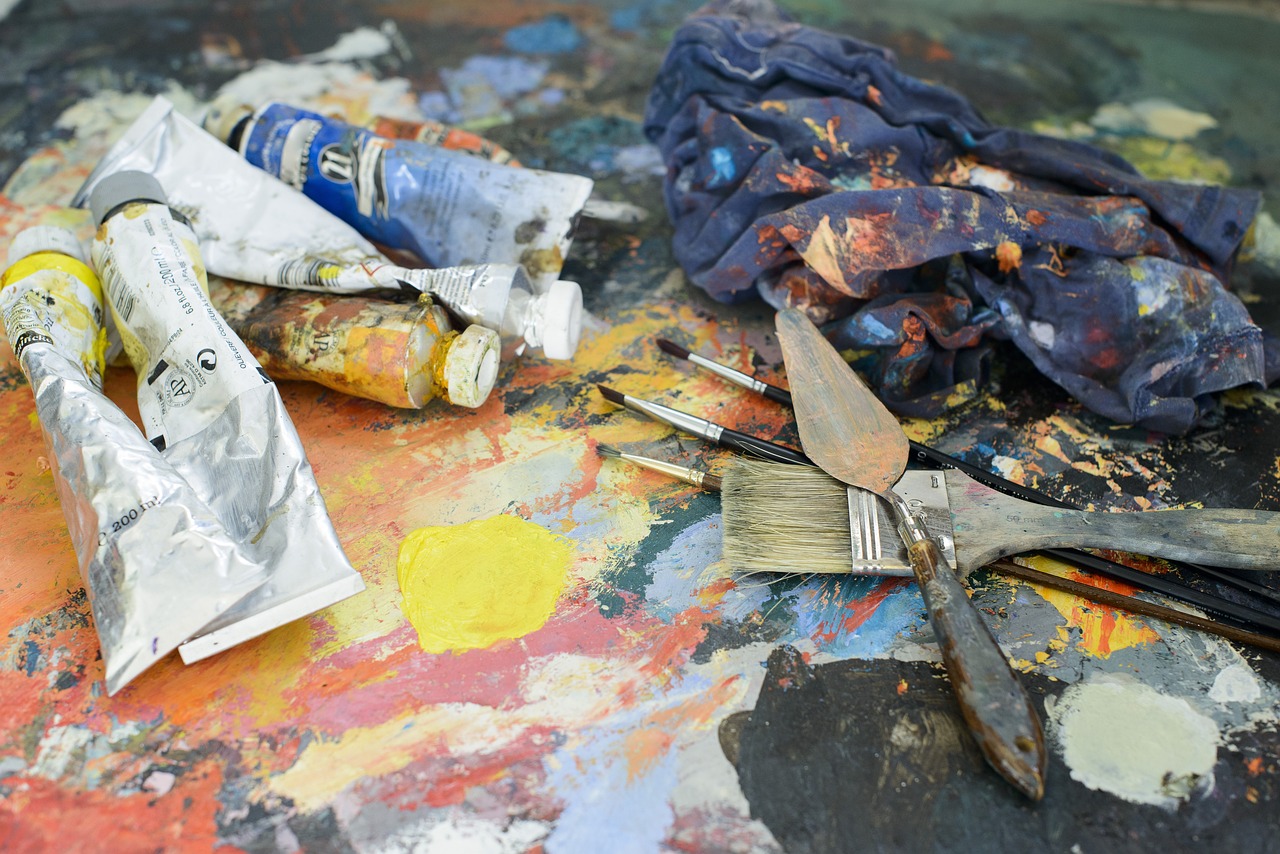
Essential Tools for Loose Painting
When it comes to achieving a loose and expressive style in acrylic painting, the right tools can make all the difference. Think of your painting tools as the instruments in a symphony; each one has a unique role to play in creating a harmonious masterpiece. So, what should you have in your toolkit? Let's dive into the essential tools that will help you paint with freedom and spontaneity.
First off, brushes are the backbone of any acrylic painting. The variety of brushes available can be overwhelming, but a few key types will serve you well. For instance, flat brushes are fantastic for making broad strokes and filling in large areas quickly, while round brushes can provide detail and finesse. Imagine flat brushes as the wide-open spaces of a landscape, while round brushes are the fine lines that define the features of a face. This combination allows for both freedom and precision in your artwork.
To achieve that loose style, consider investing in a few high-quality brushes. Here’s a quick rundown of some must-haves:
- Flat Brushes: Ideal for sweeping strokes and covering large areas.
- Round Brushes: Perfect for detail work and creating fine lines.
- Fan Brushes: Great for texture and creating unique effects.
Next, let’s talk about palette knives. These versatile tools can add incredible texture and depth to your paintings. They allow you to mix colors directly on the canvas, creating spontaneous effects that are hard to replicate with a brush. Imagine the excitement of applying paint with a palette knife—it's like sculpting with color! You can use them to scrape back layers, create sharp edges, or even apply thick blobs of paint for a three-dimensional feel.
The surface you choose to paint on can greatly influence the looseness of your work. A textured canvas can encourage a more free-flowing style, while a smooth surface might lead to more controlled brushwork. Experiment with different surfaces, such as:
- Canvas Boards: These provide a sturdy base for your work.
- Watercolor Paper: This can absorb paint differently, allowing for unique effects.
- Wood Panels: They offer a smooth, yet absorbent surface that can enhance texture.
Before you start painting, consider applying a layer of gesso to your canvas. This not only prepares the surface for paint but also allows your brush to glide more smoothly, encouraging that loose, expressive style. Think of gesso as the warm-up before the main event; it gets everything ready for the creative flow that’s about to happen!
Lastly, don’t underestimate the power of a good palette. A well-organized palette can help you mix colors more efficiently and keep your workspace tidy. You might choose a traditional wooden palette, a disposable palette pad, or even a glass palette for easy cleanup. Whatever you choose, make sure it allows you to see your colors clearly, as this will help you make better mixing decisions and keep your painting process spontaneous.
In summary, the essential tools for loose painting include a variety of brushes, palette knives, and the right surfaces. Each tool plays a vital role in helping you express your creativity without restraint. So gather your tools, embrace the messiness of the process, and let your imagination run wild!
1. Can I use any type of brush for loose acrylic painting?
While you can technically use any brush, certain shapes like flat and round brushes are more effective for achieving a loose style. They help create both broad strokes and fine details.
2. Do I need to use a specific type of canvas?
No specific type of canvas is required, but textured canvases can enhance the loose quality of your work. Experiment with different surfaces to find what works best for you.
3. How do I clean my brushes after painting?
It’s essential to clean your brushes with water immediately after use. For stubborn paint, you can use soap and water to ensure they last longer.
4. Is it necessary to use gesso on my canvas?
Using gesso is not mandatory, but it can improve the paint's adhesion and help create a smoother painting experience.
5. How can I encourage spontaneity in my painting process?
Try to let go of control and experiment with different techniques. Allow yourself to make mistakes and embrace the unexpected in your artwork!
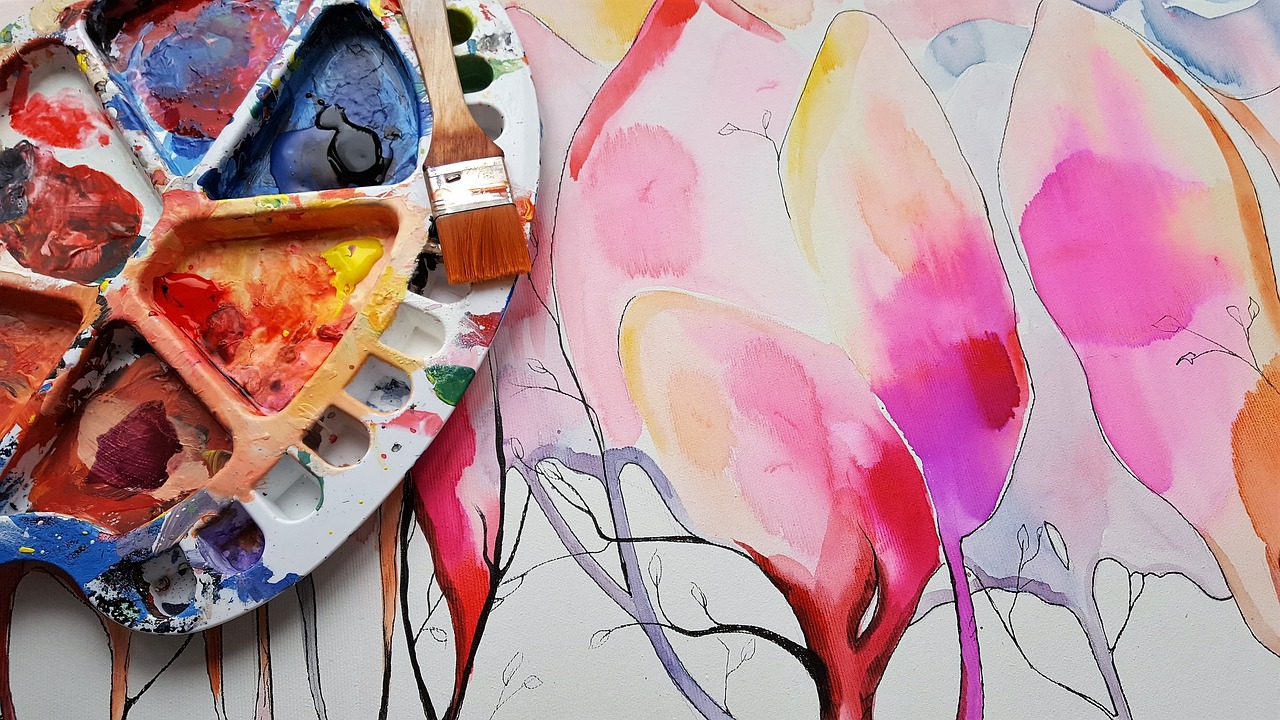
Choosing the Right Brushes
When it comes to painting loosely with acrylics, the brushes you choose can make a world of difference. Think of your brushes as the instruments of your creative symphony; each one plays a unique role in the melody of your artwork. The right brushes can help you achieve that spontaneous, free-flowing effect that defines loose painting. So, let’s break down the brush types that are best suited for this style and how to wield them like a pro.
First off, consider the flat brushes. These brushes are your go-to for broad strokes and sweeping motions. Their wide bristles allow you to cover large areas quickly, giving your painting a sense of movement and energy. Imagine the way a dancer glides across the stage—flat brushes can help you create that same fluidity on canvas. You can use them to lay down a base layer or to create bold, expressive lines. The key is to use them with confidence, allowing the brush to dance across the surface.
On the other hand, round brushes are perfect for adding details and soft edges. They offer versatility, allowing you to switch from fine lines to broader strokes with ease. Think of them as the fine-tuning tool in your artistic toolbox. They can help you define shapes and add intricate details while still maintaining that loose feel. When you’re using a round brush, let go of the need for perfection. Instead, focus on capturing the essence of your subject matter, letting the brush guide you.
But don’t stop there! Another tool that can elevate your loose painting game is the palette knife. While not a brush in the traditional sense, palette knives can introduce a whole new level of texture and spontaneity to your work. They allow you to scrape, spread, and layer paint in ways that brushes simply can’t. Imagine spreading frosting on a cake; that’s the kind of freedom a palette knife offers. You can create bold, impasto effects that add depth and interest to your paintings.
Now, let’s talk about the importance of brush quality. Investing in high-quality brushes can significantly impact your painting experience. Cheap brushes may shed bristles or lose their shape, which can be frustrating when you’re trying to achieve that loose, expressive style. Look for brushes made with durable materials that can withstand the rigors of your creative process. A well-made brush can become an extension of your hand, allowing you to express yourself more freely.
To help you get started, here’s a quick reference table of the types of brushes you might want to consider:
| Brush Type | Best For | Effect |
|---|---|---|
| Flat Brush | Broad strokes, backgrounds | Bold, sweeping motions |
| Round Brush | Details, lines | Versatile, soft edges |
| Palette Knife | Texture, layering | Impasto effects, spontaneity |
In conclusion, choosing the right brushes is essential for achieving a loose painting style. Embrace the differences between flat and round brushes, and don’t forget to experiment with palette knives. Remember, the goal is to let go of control and allow your creativity to flow freely. So grab your brushes, and let the paint fly!
- What type of brushes are best for beginners? Flat and round brushes are great for beginners due to their versatility and ease of use.
- How do I clean my brushes after painting? Rinse them in water immediately after use, then wash with soap and water to keep them in good condition.
- Can I use acrylics on any surface? Yes, acrylics can be used on various surfaces, including canvas, wood, and even paper.
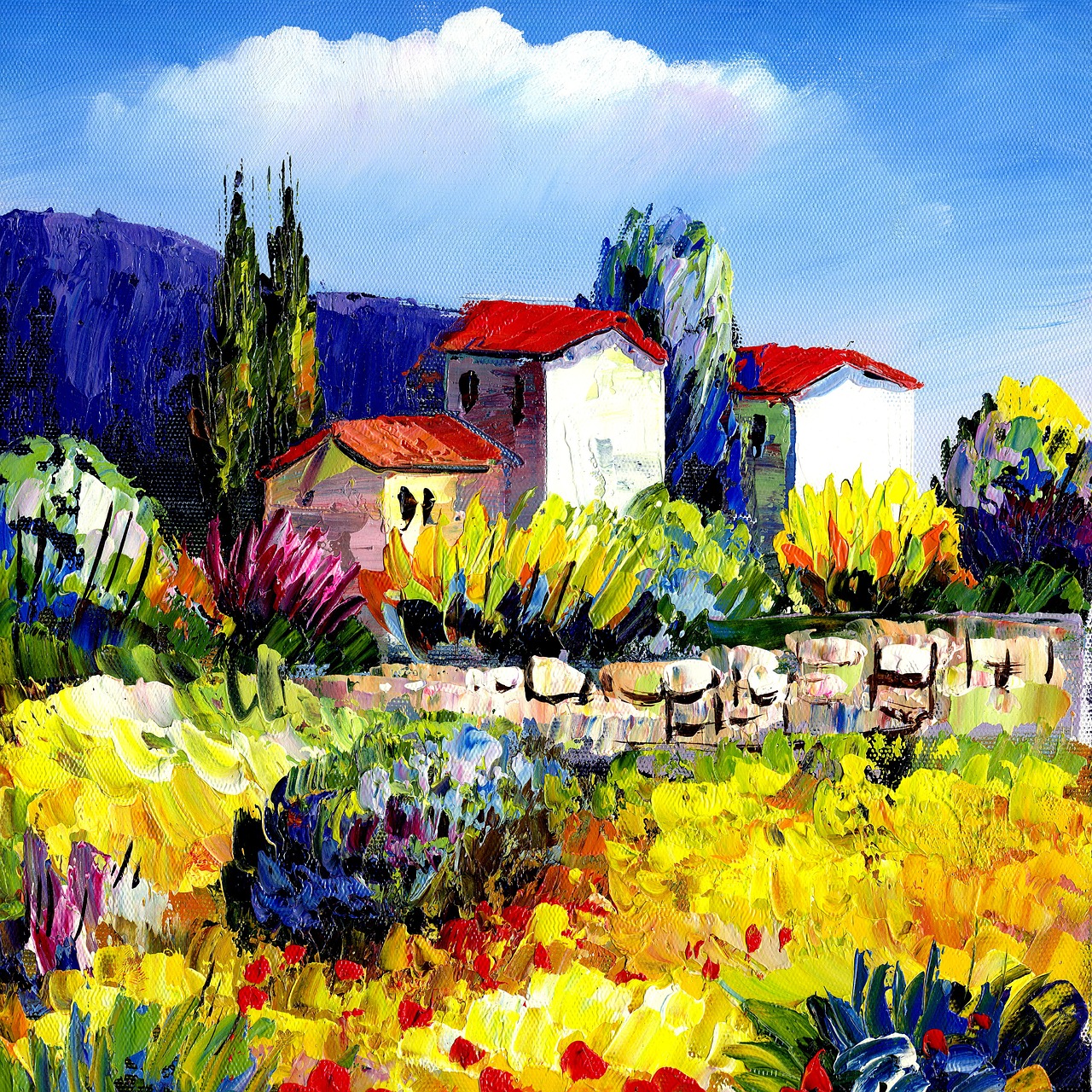
Flat vs. Round Brushes
When it comes to painting with acrylics, choosing the right brush can make all the difference in achieving that loose and expressive style you’re aiming for. Flat and round brushes each bring their unique flair to the canvas, and understanding their differences can significantly enhance your creativity. Flat brushes, with their broad, rectangular bristles, are perfect for making wide strokes, covering large areas quickly, and creating bold shapes. They work wonders when you want to lay down a solid background or create sweeping landscapes. Imagine painting a sunset; a flat brush allows you to blend colors seamlessly across the horizon, giving your work a fluid, ethereal quality.
On the other hand, round brushes are your go-to for detail and precision. With their pointed tips, they excel at creating fine lines and intricate designs. If you think of a round brush as your trusty pencil, it’s perfect for adding those delicate touches that bring your painting to life. Whether you’re adding the subtle veins on a leaf or intricate patterns on a flower, round brushes can help you achieve that expressive detail that flat brushes might miss. They allow for versatility in your strokes, as you can use the tip for fine lines or the side for broader strokes, making them incredibly adaptable.
To give you a clearer picture, here’s a quick comparison:
| Brush Type | Best For | Stroke Style |
|---|---|---|
| Flat Brush | Wide strokes, backgrounds, bold shapes | Broad, sweeping |
| Round Brush | Detail work, fine lines, intricate designs | Varied, from fine to broad |
Incorporating both flat and round brushes into your toolkit can open up a world of possibilities. You might start with a flat brush to lay down the foundation of your painting, then switch to a round brush to add those vibrant details that make your artwork pop. The key is to experiment and find a balance between the two. Think of it as a conversation between the brushes; let them communicate on your canvas, creating a dynamic interplay of shapes and colors.
Ultimately, the choice between flat and round brushes depends on your personal style and the effect you want to achieve. Don't hesitate to mix and match; sometimes, the best results come from breaking the rules and allowing your intuition to guide you. Remember, painting is as much about the journey as it is about the final piece. So grab those brushes and let your creativity flow!
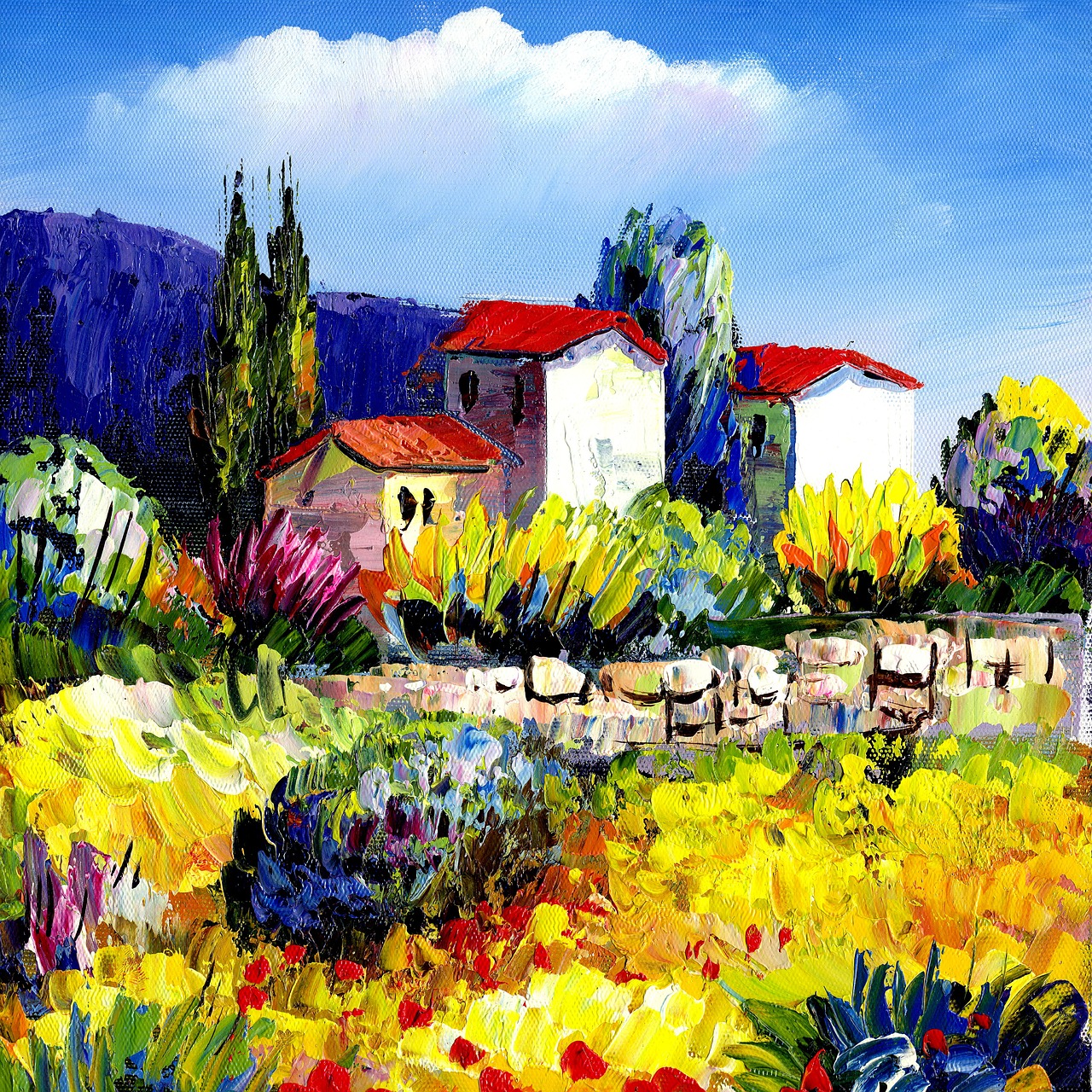
Using Palette Knives
Palette knives are not just for mixing paint; they are a game changer when it comes to achieving a loose and expressive style in acrylic painting. These versatile tools can create stunning textures and add a sense of spontaneity to your artwork. Imagine the thrill of dragging a knife across your canvas, leaving behind bold strokes and unexpected patterns that a brush simply can’t replicate. It’s like dancing on the canvas with every swipe!
When you use a palette knife, you’re not just applying paint; you’re sculpting it. The flat edge allows for broad strokes, while the pointed tip can create fine lines. This dual functionality means you can explore a range of effects, from thick impasto textures to delicate details. The beauty of palette knives lies in their ability to encourage you to let go of perfection. Instead of worrying about every brushstroke, you can embrace the chaos and spontaneity that comes with using a knife.
Here are some tips for incorporating palette knives into your acrylic painting process:
- Experiment with Pressure: The amount of pressure you apply will drastically change the outcome. Light pressure creates soft, feathery textures, while firm pressure results in bold, thick lines.
- Layering: Use palette knives to layer colors. Start with a base color and then apply additional colors on top. The knife can help blend the edges or create sharp contrasts.
- Mixing Colors: Use the palette knife to mix colors directly on your canvas. This technique can create beautiful, dynamic blends that add depth to your painting.
One of the most exciting aspects of using a palette knife is the element of surprise. You never quite know how the paint will react, and this unpredictability can lead to some truly unique results. It’s important to approach your painting with an open mind and a willingness to explore. Don’t be afraid to make mistakes; sometimes, those “mistakes” turn into the most captivating parts of your artwork.
Finally, remember that practice makes perfect! The more you experiment with palette knives, the more comfortable you will become. So grab your palette knife, let your creativity flow, and watch as your acrylic paintings transform into vibrant expressions of your artistic vision.
Q: Can I use a palette knife with any type of paint?
A: While palette knives are commonly used with acrylics, they can also be used with oils and other thick paints. Just be sure to clean them properly after each use!
Q: How do I clean my palette knife?
A: Cleaning a palette knife is simple! Wipe off excess paint with a paper towel and then wash it with soap and water. For dried paint, you may need to use a scraper or a solvent.
Q: Are there specific techniques for using a palette knife?
A: Yes! Techniques include dragging, scraping, and layering. Each technique can create different textures and effects, so feel free to experiment!
Q: Can palette knives be used for fine details?
A: Absolutely! While palette knives are great for broad strokes and textures, the pointed edge can also be used to create fine lines and details.
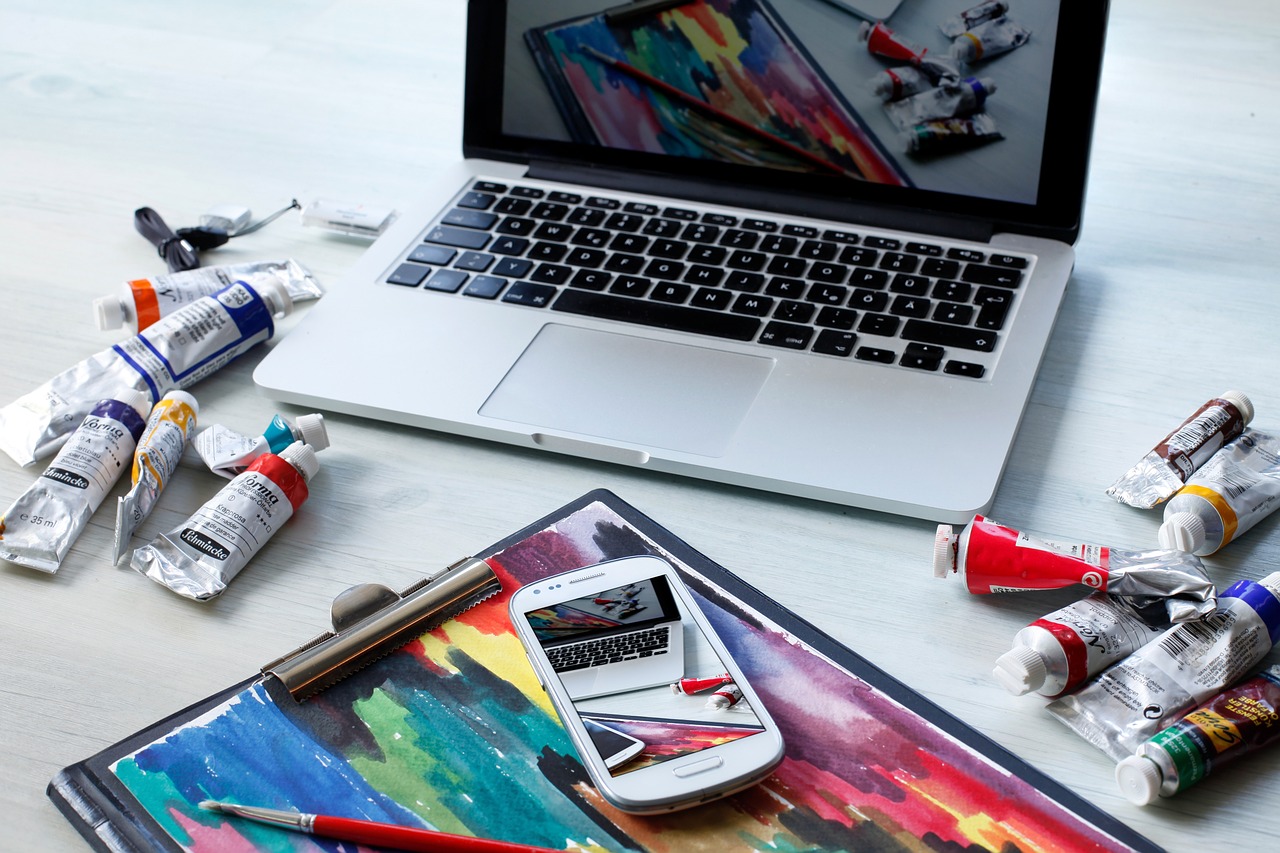
Surface Preparation Techniques
When it comes to painting loosely with acrylics, the preparation of your canvas is just as important as the brushwork and color choices. A well-prepared surface can significantly enhance the fluidity and expressiveness of your strokes. Think of your canvas as the stage for your artistic performance; if the stage is set right, the show can be truly spectacular!
One of the first things to consider is the texture of your canvas. A smooth surface can allow for quick, sweeping strokes, while a textured surface can add depth and dimension to your painting. You might want to experiment with different types of canvases, such as:
- Stretched Canvas: This is the most common choice and is available in a variety of textures.
- Canvas Boards: These are less expensive and are great for practice.
- Wood Panels: They offer a very smooth surface, ideal for detailed work.
Another crucial aspect is the application of a gesso layer. Gesso serves as a primer for your canvas, providing a slightly textured surface that helps the paint adhere better. Applying a layer of gesso not only prepares the canvas but also allows for easier blending and layering of colors, which is essential for achieving that loose style. You can apply gesso with a brush or a palette knife, depending on the texture you desire.
After applying gesso, consider adding a wash of color to your canvas. This technique involves diluting acrylic paint with water and applying it over the gessoed surface. The wash can create an underpainting that warms up your canvas and gives your artwork a cohesive feel right from the start. It’s like laying down a foundation for a beautiful building; it sets the tone for everything that follows.
Lastly, remember to allow your surface to dry completely before you start painting. Acrylics dry quickly, but if you've applied multiple layers, it’s best to wait until everything is fully set. Rushing this step can lead to unwanted textures and mixes that might hinder your ability to paint loosely.
In summary, the right surface preparation techniques can make all the difference in your acrylic painting experience. By selecting the appropriate canvas, applying gesso, and using a wash, you’ll create an inviting space for your creativity to flow freely. So, grab your materials and get ready to unleash your inner artist!
Q: What type of canvas is best for loose acrylic painting?
A: The best canvas often depends on personal preference. Stretched canvases are popular, but textured surfaces can enhance the loose style. Experiment to find what works for you!
Q: Do I need to use gesso on my canvas?
A: While it's not mandatory, using gesso is highly recommended as it helps the paint adhere better and allows for smoother application and blending.
Q: How long should I let my surface dry?
A: It’s best to let your surface dry completely after applying gesso or any washes. This could take anywhere from 30 minutes to a few hours, depending on the thickness of the layers.
Q: Can I paint over an old painting?
A: Yes, you can paint over an old painting, especially if you want to create a new layer or effect. Just ensure that the previous paint is dry and that you prepare the surface accordingly.
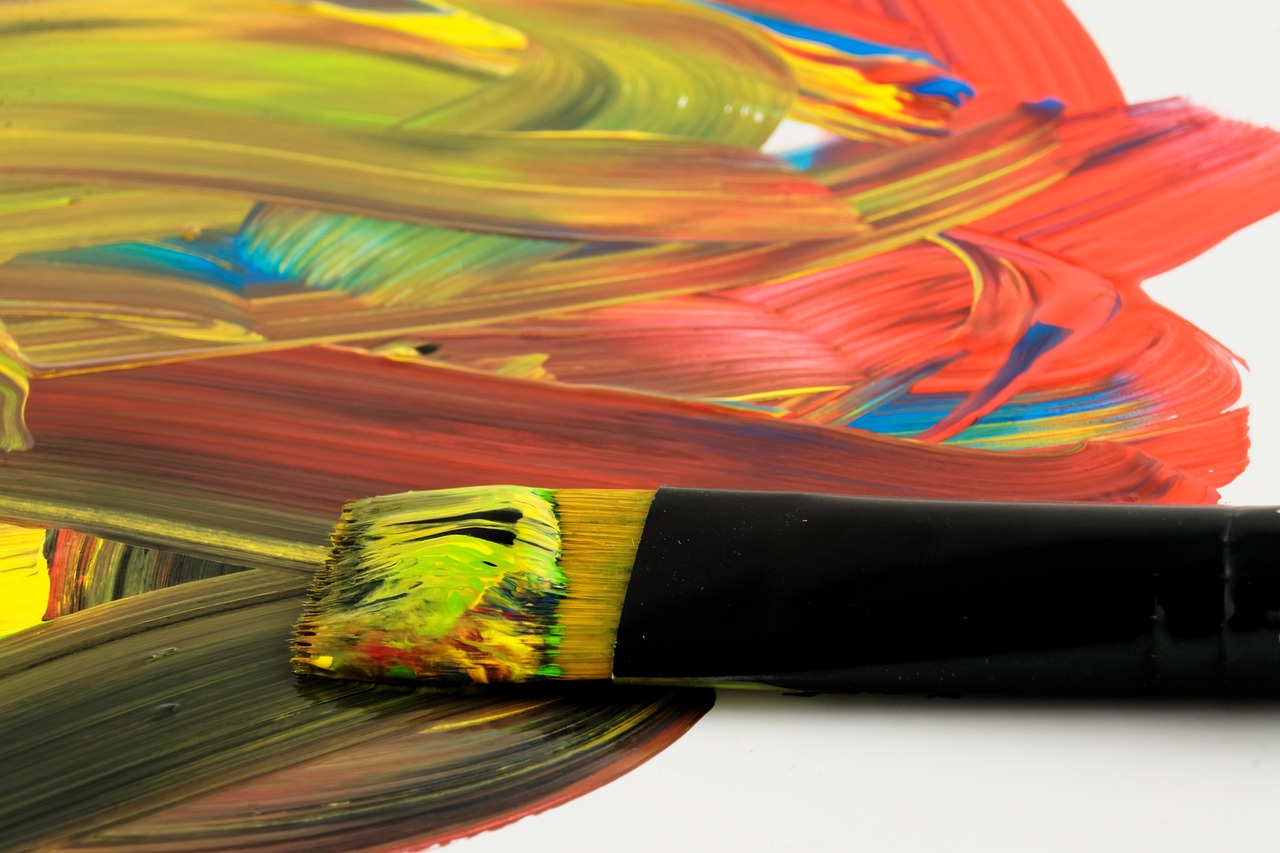
Color Mixing for Expressiveness
When it comes to painting loosely with acrylics, color mixing is like the secret sauce that can elevate your artwork from ordinary to extraordinary. Imagine your canvas as a blank stage, and the colors you mix are the actors that bring your story to life. The right combination of hues can evoke emotions, create depth, and draw viewers into your creative world. So, how do you mix colors effectively to achieve that spontaneous, vibrant feel? Let’s dive in!
One of the most effective techniques for achieving expressiveness in your acrylic paintings is to use a limited palette. By restricting yourself to a few colors, you can create a more cohesive and harmonious piece. Think of it as a musical ensemble where each instrument contributes to a beautiful symphony. When choosing your colors, consider primary colors like red, blue, and yellow, and mix them to create secondary colors. This not only simplifies your process but also encourages you to explore the relationships between colors in a more profound way.
To illustrate the concept of a limited palette, here’s a simple table showcasing a few color combinations:
| Primary Color | Secondary Color | Mixed Result |
|---|---|---|
| Red | Yellow | Orange |
| Blue | Yellow | Green |
| Red | Blue | Purple |
Understanding color relationships is another key aspect of creating dynamic and expressive art. Complementary colors, which are opposite each other on the color wheel, can create striking contrasts that make your artwork pop. For example, pairing blue with orange can draw the eye and add vibrancy to your painting. On the other hand, using analogous colors—those that sit next to each other on the wheel, like blue, blue-green, and green—can evoke a sense of harmony and tranquility. By experimenting with these relationships, you can add layers of depth and movement to your loose acrylic paintings.
But what about mixing colors directly on your canvas? This technique can add an element of surprise and spontaneity to your work. When you apply wet paint onto wet paint, you allow the colors to blend and interact in unexpected ways. Imagine a dance where each color twirls and swirls, creating new shades and textures that you might not have planned. This method encourages you to let go of control and embrace the beauty of imperfection, which is at the heart of a loose painting style.
As you mix colors, don’t forget to consider the transparency and opacity of your paints. Acrylics can range from transparent to opaque, and understanding how these properties affect your mixing can lead to stunning results. Transparent colors can create luminous layers, while opaque colors can provide bold coverage. Mixing a transparent color over an opaque one can yield fascinating effects, allowing you to build depth and richness in your artwork.
Lastly, remember that the journey of color mixing is as important as the destination. Experimentation is crucial in developing your unique style. Don’t be afraid to make mistakes or mix colors that seem unconventional. Sometimes, the most beautiful outcomes arise from unexpected choices. So grab your brushes, let your intuition guide you, and watch as your canvas transforms into a vibrant expression of your creativity!
- What is a limited palette? A limited palette refers to using a small selection of colors to create a painting, which helps in achieving harmony and cohesiveness.
- How can I create depth in my paintings? You can create depth by using complementary colors, layering transparent paints, and experimenting with different brush techniques.
- What are the best colors for beginners? Beginners may find it helpful to start with primary colors (red, blue, yellow) and white, which can be mixed to create a wide range of hues.
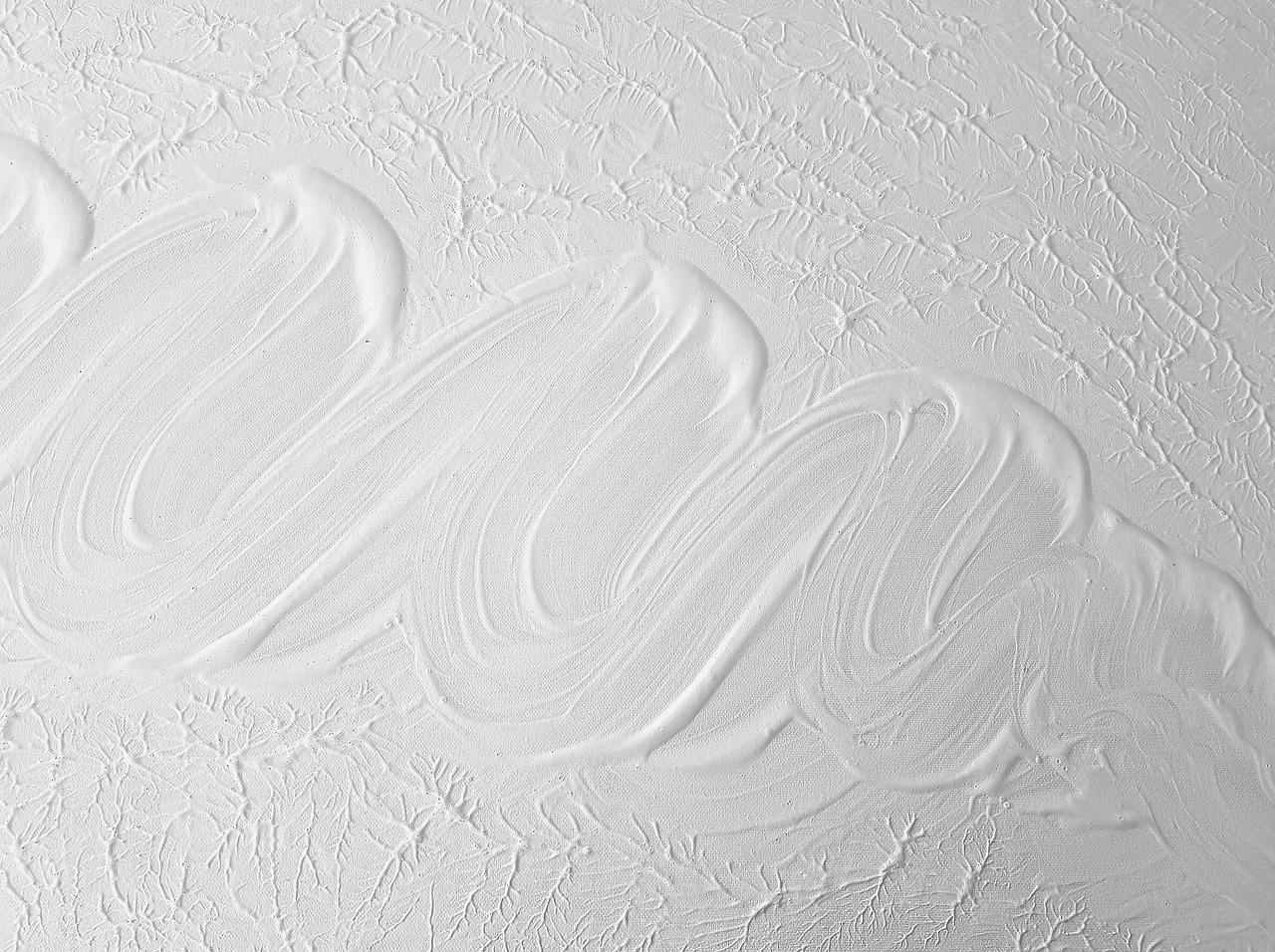
Using Limited Palettes
When it comes to painting with acrylics, using a limited palette can be a game-changer. Imagine walking into a garden filled with a riot of colors, yet the most stunning floral arrangement is often created using just a few select hues. This principle applies beautifully to painting. By restricting your color choices, you not only create a more cohesive look but also enhance the expressiveness of your artwork. But how do you go about choosing the right colors?
First, consider the emotional impact of colors. Each hue carries a psychological weight; for example, blues can evoke calmness, while reds might stir passion. When you limit your palette, you can hone in on the feelings you want to convey. A common approach is to select three primary colors and a couple of neutrals. This could look something like:
| Color Type | Examples |
|---|---|
| Primary Colors | Red, Blue, Yellow |
| Neutral Colors | White, Black, Gray |
Next, think about color mixing. With just a few colors, you can create a vast array of shades and tones. This not only encourages you to experiment more but also enhances your understanding of color theory. For instance, mixing your primary colors can yield secondary colors, giving you an even broader spectrum to work with. Here’s a quick tip: always keep a color mixing chart handy to track your combinations and the results they yield.
Another benefit of a limited palette is the elimination of decision fatigue. When faced with an overwhelming selection of colors, it’s easy to feel paralyzed. By simplifying your choices, you can focus more on the act of painting itself rather than getting bogged down in indecision. This leads to a more intuitive and fluid painting experience.
In addition, limiting your palette can foster a sense of unity and harmony in your work. When all your colors are derived from a few base hues, they naturally complement each other, leading to a more visually appealing piece. This is particularly important in loose painting styles, where cohesion can sometimes be lost amidst the chaos of brushstrokes.
Finally, don't be afraid to experiment. Your limited palette can evolve as you grow more comfortable with it. Try introducing a new color every now and then or swapping one out for another. This keeps your work fresh and exciting while still adhering to the principles of a limited palette.
In summary, using a limited palette in acrylic painting not only simplifies your decision-making process but also enhances your ability to express emotions and create visually harmonious works. So grab those colors, let your creativity flow, and watch as your paintings transform into vibrant expressions of your artistic vision!
- What is a limited palette in painting? A limited palette refers to using a small selection of colors to create a painting, which can enhance cohesion and expressiveness.
- How do I choose colors for my limited palette? Start with three primary colors and a couple of neutrals, and consider the emotional impact of each color.
- Can I add more colors later? Absolutely! Feel free to experiment and introduce new colors as you become more comfortable with your palette.
- What are the benefits of using a limited palette? It simplifies decision-making, enhances color mixing, fosters unity in your artwork, and promotes a more intuitive painting experience.
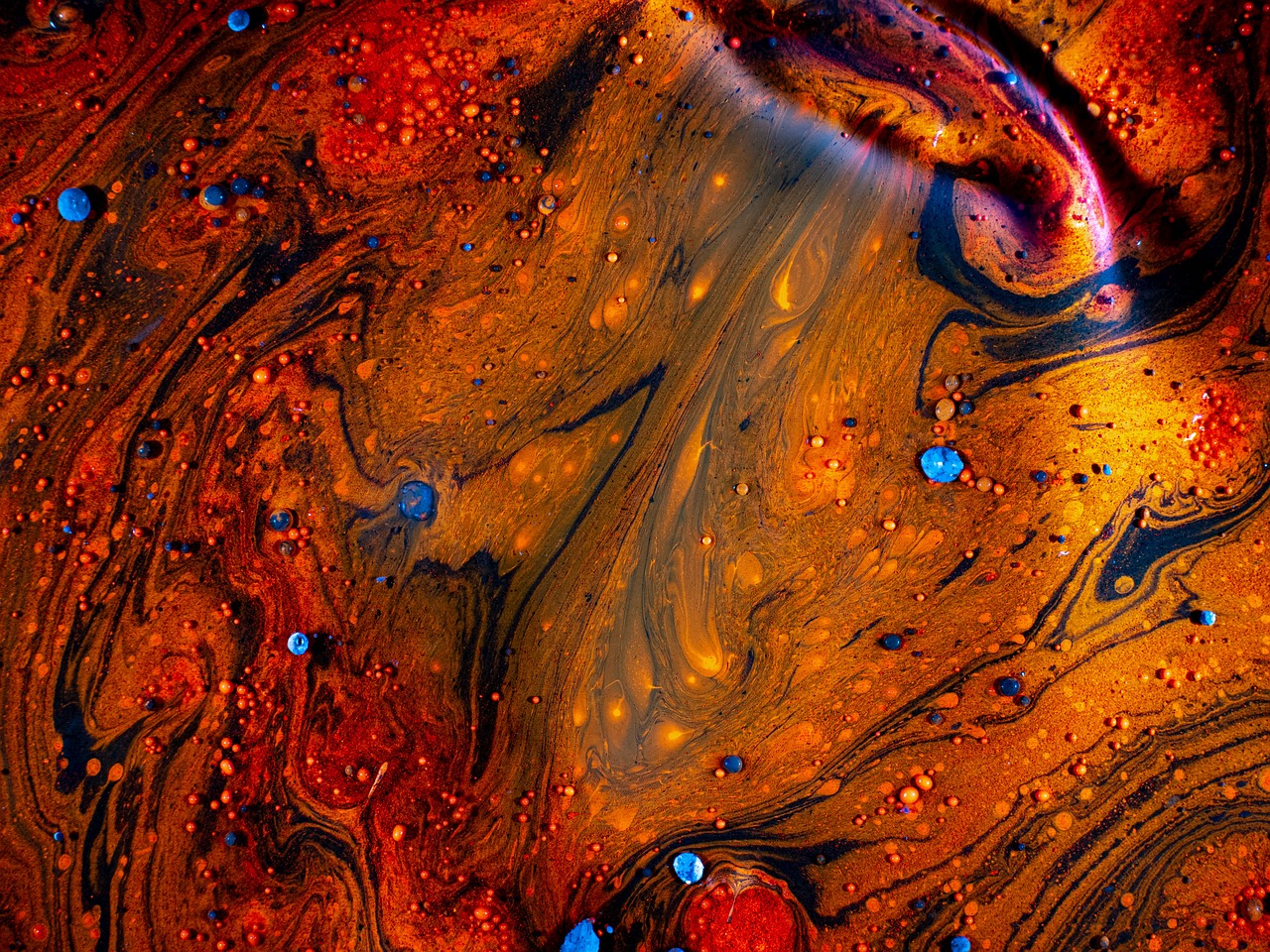
Creating Dynamic Color Relationships
When it comes to painting with acrylics, the magic often lies in the colors you choose and how they interact with one another. Creating dynamic color relationships can transform a simple piece of art into a vibrant masterpiece that captures the viewer's attention. Have you ever looked at a painting and felt an emotional connection? That’s usually due to the artist's understanding of color dynamics!
One of the most effective ways to create dynamic color relationships is by exploring the concepts of complementary and analogous colors. Complementary colors are those that sit opposite each other on the color wheel, such as blue and orange or red and green. When placed side by side, they create a striking contrast that can energize your painting. For example, if you use a vibrant orange as your base, adding touches of blue can make those areas pop, drawing the viewer's eye across the canvas.
On the other hand, analogous colors are those that are next to each other on the color wheel, like blue, blue-green, and green. These colors create a sense of harmony and unity. Imagine painting a sunset; using shades of red, orange, and yellow will create a warm, inviting atmosphere. The beauty of using analogous colors is that they can help to create a seamless transition in your artwork, adding depth without overwhelming the senses.
To further illustrate the impact of color relationships, consider the following table:
| Color Type | Examples | Effect |
|---|---|---|
| Complementary | Blue & Orange, Red & Green | Creates contrast and vibrancy |
| Analogous | Blue, Blue-Green, Green | Creates harmony and unity |
Moreover, understanding the temperature of colors can also elevate your work. Colors can be categorized as warm (reds, oranges, yellows) or cool (blues, greens, purples). By balancing warm and cool colors, you can create a more dynamic composition. For instance, if your painting predominantly features warm colors, introducing a cool color can provide a refreshing contrast, making the warm colors feel even more intense.
Another technique to enhance your color relationships is through layering. By applying multiple layers of color, you can achieve depth and complexity. Imagine painting a landscape; by layering shades of green, blue, and brown, you can create a rich tapestry of color that feels alive. This method not only adds dimension to your work but also allows for unexpected interactions between colors as they blend and mingle on the canvas.
Finally, don’t forget about the importance of experimenting. Sometimes, the best color relationships come from unexpected combinations. Don’t be afraid to try out colors that you think might clash; you might be pleasantly surprised by the results. Remember, art is about exploration and expression, so allow yourself the freedom to play with color!
In conclusion, creating dynamic color relationships involves understanding the principles of complementary and analogous colors, balancing warm and cool tones, layering for depth, and embracing experimentation. By incorporating these techniques into your acrylic painting process, you’ll not only enhance the visual appeal of your artwork but also deepen the emotional connection it evokes in your viewers.
- What are complementary colors? Complementary colors are pairs of colors that, when combined, cancel each other out. They are located opposite each other on the color wheel.
- How can I use color temperature in my painting? Color temperature refers to the warmth or coolness of a color. Balancing warm and cool colors can create contrast and depth in your artwork.
- What is the importance of layering colors? Layering allows for the creation of depth and complexity in your painting, enhancing the overall visual appeal.
- Can I mix unexpected colors? Absolutely! Experimenting with unexpected color combinations can lead to unique and striking results in your artwork.
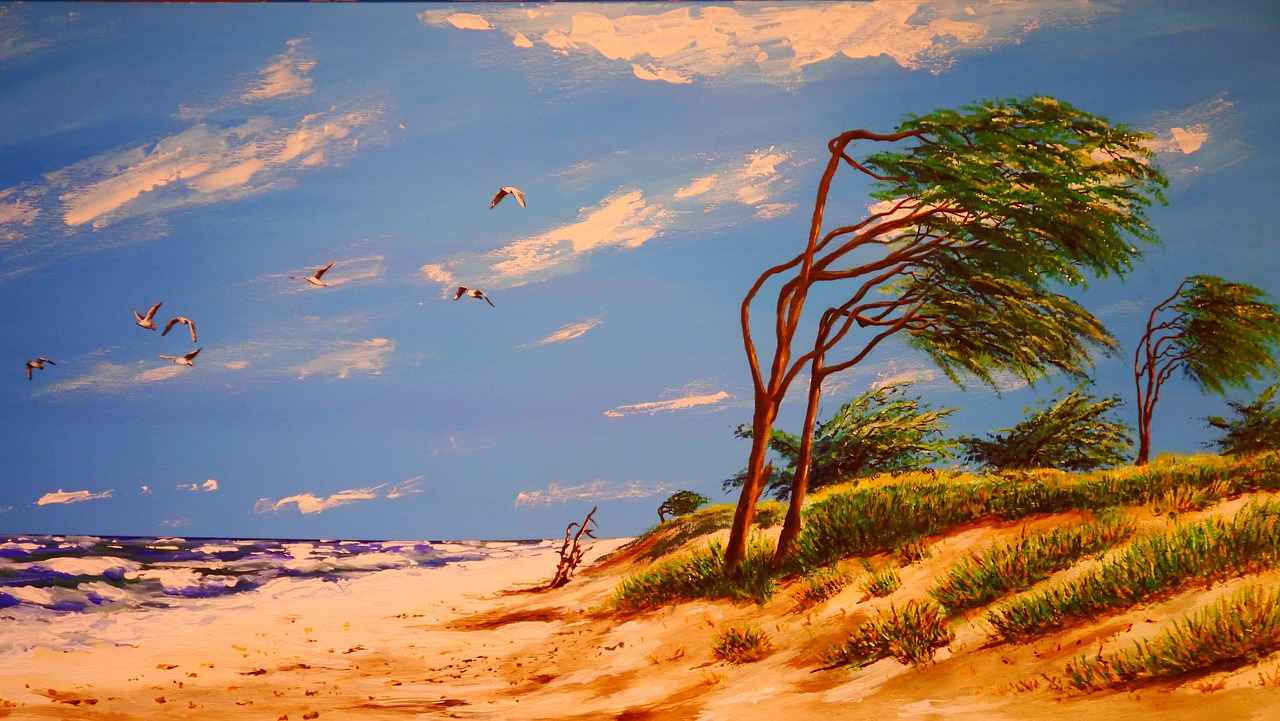
Embracing Spontaneity in Your Process
When it comes to painting, especially in a loose and expressive style, spontaneity can be your best friend. Imagine standing in front of your canvas, paintbrush in hand, and feeling that surge of creativity bubbling up inside you. This is where the magic happens! Embracing spontaneity means letting go of the rigid rules that often bind artists and allowing your instincts to take the lead. It's about trusting your creative intuition and exploring the unexpected, much like a jazz musician improvising a solo. So, how do you cultivate this sense of freedom in your painting process?
One effective way to encourage spontaneity is to experiment with different techniques. For instance, try using a variety of brush strokes and tools. You might find that a quick swipe of a palette knife creates a texture you never thought possible, or that flicking your brush can produce a delightful splash of color. The key here is to let go of the need for perfection. Remember, the goal is to express yourself, not to create a masterpiece on the first try. Allow your brush to dance across the canvas, and don't be afraid to make mistakes—they often lead to the most exciting discoveries!
Another way to embrace spontaneity is by finding inspiration in the moment. Inspiration can strike when you least expect it, so keep your eyes and mind open. Whether it's the way the sunlight hits your living room wall or the vibrant colors of a flower outside your window, these small moments can ignite your creativity. Try setting a timer for short bursts of painting, say 10-15 minutes, where you focus solely on capturing what you see or feel at that moment. This practice can help you break free from overthinking and allow your instincts to guide your brush.
Incorporating music into your painting sessions can also enhance spontaneity. Create a playlist that resonates with you—something upbeat and inspiring. As the music plays, let it influence your brushwork and color choices. You might find yourself painting with more energy and freedom, moving to the rhythm of the tunes. Just like dancers respond to music, your brush will respond to the beats, creating a lively and dynamic piece of art.
Finally, remember that spontaneity thrives on experimentation. Don’t be afraid to try out new materials or techniques. Mix mediums, layer colors, or even paint with your fingers! By stepping outside your comfort zone, you open up a world of possibilities. The beauty of loose acrylic painting is that there are no strict rules—only your creative voice waiting to be unleashed.
- How can I overcome the fear of making mistakes in my paintings? Start by reminding yourself that mistakes are part of the creative process. Embrace them as opportunities to learn and grow.
- What should I do if I feel stuck or uninspired? Take a break, go for a walk, or change your environment. Sometimes, a fresh perspective can reignite your creativity.
- Can I use other tools besides brushes for loose painting? Absolutely! Palette knives, sponges, and even your fingers can create interesting textures and effects.
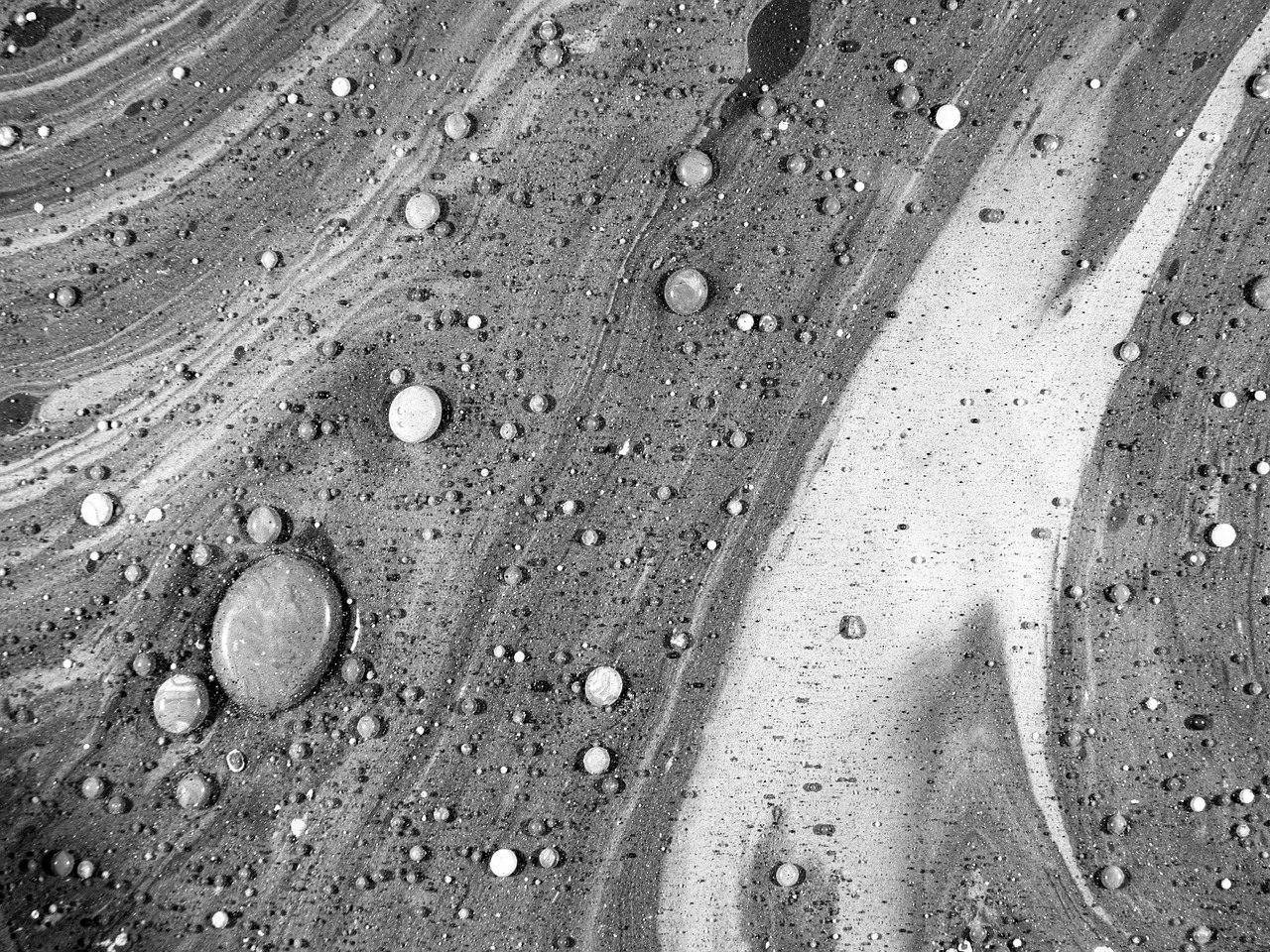
Techniques for Spontaneous Brushwork
When it comes to spontaneous brushwork, the key is to let go of your inhibitions and allow your instincts to take the lead. Think of your brush as an extension of your thoughts, dancing across the canvas with freedom and flair. One effective technique is to use quick, sweeping motions. Instead of meticulously placing every stroke, try to move your arm in larger gestures. This approach can create a sense of movement and energy in your painting, making it feel alive and dynamic.
Another fantastic technique is to experiment with varying pressure on your brush. By applying different amounts of pressure, you can achieve a range of effects—from delicate, whispering lines to bold, impactful strokes. This not only adds visual interest but also encourages you to explore the relationship between light and shadow in your work. Don't be afraid to switch between light and heavy strokes within the same piece; this contrast can enhance the spontaneity of your brushwork.
Have you ever tried using your non-dominant hand? It might sound a bit intimidating, but using your non-dominant hand can free you from the constraints of precision and control. This technique can lead to unexpected and delightful results. You might find that your brushstrokes become more fluid and less self-conscious, allowing your creativity to flow more freely.
Incorporating palette knives into your spontaneous brushwork can also elevate your technique. Unlike traditional brushes, palette knives allow for bold, thick applications of paint and can create interesting textures. You can scrape, spread, and layer paint in ways that brushes simply can't achieve. This method adds a whole new dimension to your work, encouraging a sense of adventure and experimentation.
Finally, consider setting a timer for your painting sessions. Give yourself a limited amount of time, say 10 or 15 minutes, to create a piece. This time constraint can push you to work quickly and instinctively, resulting in a more spontaneous approach. You'll be surprised at how much you can achieve when you're not overthinking every stroke!
To summarize, here are some key techniques to embrace spontaneous brushwork:
- Quick Sweeping Motions: Create energy and movement.
- Varying Pressure: Achieve a range of effects and enhance light and shadow.
- Use Your Non-Dominant Hand: Free yourself from precision.
- Incorporate Palette Knives: Add texture and boldness.
- Set a Timer: Encourage quick, instinctive painting.
By integrating these techniques into your acrylic painting practice, you’ll find that your brushwork becomes more expressive and free. Remember, the goal is not perfection but rather to capture the essence of your thoughts and emotions on the canvas. So grab your brushes and let your creativity run wild!
Q: How can I practice spontaneity in my painting?
A: One effective way to practice spontaneity is to set time limits for your painting sessions, use your non-dominant hand, and allow yourself to make mistakes. Embrace the unexpected!
Q: What types of brushes are best for spontaneous brushwork?
A: Flat and round brushes are great for spontaneous brushwork. Flat brushes are perfect for broad strokes, while round brushes can add detail and variety.
Q: Can I use other tools besides brushes for spontaneous painting?
A: Absolutely! Palette knives, sponges, and even your fingers can be used to create unique textures and effects in your artwork.
Q: How important is color choice in spontaneous painting?
A: Color choice is crucial! Using a limited palette can help create harmony in your work, while contrasting colors can add excitement and energy.

Finding Inspiration in the Moment
As an artist, you might find that the most profound moments of inspiration often strike when you least expect them. Have you ever been out for a walk, and suddenly the way the light hits a tree or the vibrant colors of a sunset ignite a spark within you? This is the beauty of being open to the world around you. is all about cultivating a mindset that embraces spontaneity and allows creativity to flow freely.
To harness this inspiration, consider keeping a small sketchbook or journal with you at all times. You never know when a fleeting idea will pop into your head. Whether it’s a quick doodle or a note about a color combination you saw, documenting these moments can lead to incredible breakthroughs in your artwork. Additionally, don’t hesitate to use your phone to capture photographs or videos of scenes that resonate with you. These can serve as references or reminders when you sit down to paint.
Another effective way to find inspiration is to immerse yourself in different environments. Visiting a local park, a bustling café, or even an art gallery can provide fresh perspectives and ideas. Each location has its unique energy and colors that can inspire your brushwork. Remember, inspiration is often found in the details—so take a moment to observe the little things. The texture of a leaf, the rhythm of passing clouds, or the patterns in a crowd can all spark your imagination.
Moreover, don’t underestimate the power of collaboration. Engaging with fellow artists can lead to unexpected ideas and techniques. Join a local art group or participate in workshops where you can share your experiences and learn from others. Sometimes, just hearing someone else's perspective or seeing their work can reignite your creative fire.
Lastly, allow yourself to be playful. Set aside time for experimentation without the pressure of creating a finished piece. You might try painting with your non-dominant hand, using unconventional tools like sponges or sticks, or even creating a piece using only one color. These activities can lead to surprising results and help you discover new aspects of your style. Remember, art is about exploration and expression—so let go of the need for perfection and embrace the beauty of the unexpected.
- How can I stay inspired while painting? Try taking breaks, exploring new environments, and connecting with other artists.
- What should I do if I feel stuck creatively? Experiment with different techniques, and don’t be afraid to step away from your work for a bit.
- Is it important to document my inspirations? Yes! Keeping a sketchbook or taking photos can help you remember those fleeting moments of creativity.
Frequently Asked Questions
- What is the best way to achieve a loose painting style with acrylics?
To achieve a loose painting style with acrylics, focus on using broad, expressive brush strokes and allow yourself to experiment with color and texture. It's all about letting go of perfection and embracing spontaneity in your work.
- Which brushes are ideal for loose acrylic painting?
Flat and round brushes are fantastic for loose acrylic painting. Flat brushes are perfect for making broad strokes, while round brushes can add details and curves. Experimenting with different shapes will help you find what works best for your style.
- How can I prepare my canvas for a looser painting experience?
Preparing your canvas can greatly influence the looseness of your painting. Consider using a textured surface or applying a layer of gesso to create a more dynamic foundation. This allows your brushwork to flow freely and encourages spontaneity.
- What role does color mixing play in loose acrylic painting?
Color mixing is crucial for creating vibrancy and expressiveness in your artwork. Using a limited palette can help maintain cohesion, while understanding color relationships, like complementary and analogous colors, can add depth and movement to your paintings.
- How can I encourage spontaneity in my painting process?
To encourage spontaneity, try techniques like painting with your non-dominant hand, using palette knives, or even closing your eyes while applying paint. These methods can help you let go of control and embrace the unexpected in your artwork.
- Where can I find inspiration for my loose acrylic paintings?
Inspiration can come from anywhere! Keep an open mind and observe your surroundings. Try painting from life, or use music and emotions to guide your brushwork. The key is to be present and allow your intuition to lead the way.



















